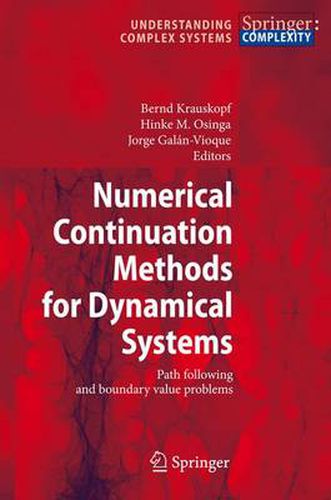Readings Newsletter
Become a Readings Member to make your shopping experience even easier.
Sign in or sign up for free!
You’re not far away from qualifying for FREE standard shipping within Australia
You’ve qualified for FREE standard shipping within Australia
The cart is loading…






This title is printed to order. This book may have been self-published. If so, we cannot guarantee the quality of the content. In the main most books will have gone through the editing process however some may not. We therefore suggest that you be aware of this before ordering this book. If in doubt check either the author or publisher’s details as we are unable to accept any returns unless they are faulty. Please contact us if you have any questions.
Path following in combination with boundary value problem solvers has emerged as a continuing and strong influence in the development of dynamical systems theory and its application. It is widely acknowledged that the software package AUTO - developed by Eusebius J. Doedel about thirty years ago and further expanded and developed ever since - plays a central role in the brief history of numerical continuation.
This book has been compiled on the occasion of Sebius Doedel’s 60th birthday. Bringing together for the first time a large amount of material in a single, accessible source, it is hoped that the book will become the natural entry point for researchers in diverse disciplines who wish to learn what numerical continuation techniques can achieve.
The book opens with a foreword by Herbert B. Keller and lecture notes by Sebius Doedel himself that introduce the basic concepts of numerical bifurcation analysis. The other chapters by leading experts discuss continuation for various types of systems and objects and showcase examples of how numerical bifurcation analysis can be used in concrete applications. Topics that are treated include: interactive continuation tools, higher-dimensional continuation, the computation of invariant manifolds, and continuation techniques for slow-fast systems, for symmetric Hamiltonian systems, for spatially extended systems and for systems with delay. Three chapters review physical applications: the dynamics of a SQUID, global bifurcations in laser systems, and dynamics and bifurcations in electronic circuits.
$9.00 standard shipping within Australia
FREE standard shipping within Australia for orders over $100.00
Express & International shipping calculated at checkout
This title is printed to order. This book may have been self-published. If so, we cannot guarantee the quality of the content. In the main most books will have gone through the editing process however some may not. We therefore suggest that you be aware of this before ordering this book. If in doubt check either the author or publisher’s details as we are unable to accept any returns unless they are faulty. Please contact us if you have any questions.
Path following in combination with boundary value problem solvers has emerged as a continuing and strong influence in the development of dynamical systems theory and its application. It is widely acknowledged that the software package AUTO - developed by Eusebius J. Doedel about thirty years ago and further expanded and developed ever since - plays a central role in the brief history of numerical continuation.
This book has been compiled on the occasion of Sebius Doedel’s 60th birthday. Bringing together for the first time a large amount of material in a single, accessible source, it is hoped that the book will become the natural entry point for researchers in diverse disciplines who wish to learn what numerical continuation techniques can achieve.
The book opens with a foreword by Herbert B. Keller and lecture notes by Sebius Doedel himself that introduce the basic concepts of numerical bifurcation analysis. The other chapters by leading experts discuss continuation for various types of systems and objects and showcase examples of how numerical bifurcation analysis can be used in concrete applications. Topics that are treated include: interactive continuation tools, higher-dimensional continuation, the computation of invariant manifolds, and continuation techniques for slow-fast systems, for symmetric Hamiltonian systems, for spatially extended systems and for systems with delay. Three chapters review physical applications: the dynamics of a SQUID, global bifurcations in laser systems, and dynamics and bifurcations in electronic circuits.